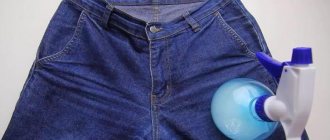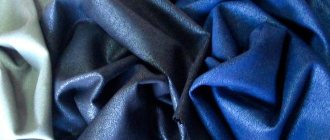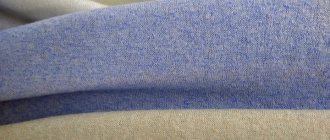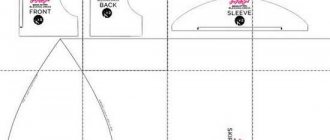It often happens that the dress you like seems so perfect that ladies don’t even feel any discomfort when trying it on for the first time. Already at home, when you can calmly examine the much desired purchase, it turns out that the dress is not enough. The size difference is small, but just enough to make wearing a new thing uncomfortable.
Fortunately, in most cases, a small adjustment is enough to correct the situation.
A new dress is not enough: what to do?
The first thing that comes to mind in such a situation is losing weight. But this is not always possible or advisable. Therefore, let’s focus on correcting the outfit itself.
First, you need to decide on the end result that you would like to achieve. It often happens that the original shape and style of the dress cannot be preserved. In other cases, the item cannot be altered at all and any correction will simply render it unusable.
The easiest way to remake a dress is one that has a lot of details, yokes, raised elements and embellishments, and seams. This will make it easy to rip it apart in places where it is needed. Sometimes you have to completely disassemble the product.
Shrinkage after washing
This method is only suitable for natural woolen items. When exposed to high temperatures, they tend to shrink, that is, shrink. If the dress has lost its shape or stretched, it is recommended to soak it in water at +50–80 degrees. The hotter it is, the more it will shrink.
Wool after washing
It is worth remembering that the thing will not stretch back, so it is important to be careful. It is better to wash by hand in order to timely control
Thus, the process of changing the size of your favorite dress after reading this article will not be so difficult for any girl or woman.
Dress transformation process
After the dress has been cut, it is necessary to iron the seams with an iron and remove all threads. Next, you should select the material from which the inserts will be formed, creating the missing volume of the item.
This year, contrast in both fabric texture and shades has become fashionable. Therefore, you can select a material that is identical in all respects to the main one used in the product, or buy a completely different one in quality and color. All kinds of mesh, guipure, and lace become universal in this regard. Denser fabrics easily tolerate proximity to leather and its substitutes. If guipure and lace make the outfit more feminine, then leather or jeans will add coquetry and bring the dress closer to simpler styles.
Good idea! If transparent inserts do not suit the style or purpose of the outfit, but you really want to use them, then you can put silk or satin under the translucent fabric.
This will add originality to the final version of the dress. The most popular combination remains flesh-colored satin with black lace sewn onto it.
What you need for work
To correct this situation, you need to prepare special sewing supplies. The process of altering a finished product is often associated with patience, because the basis for altering a dress is ripping the seams.
- Sharp tailor's scissors and small nail scissors. Scissors are necessary for ripping seams, making cuts and cuts.
- Needles and pins. Necessary for chipping or connecting different parts of the product when sweeping parts is planned.
- Centimeter, ruler. Necessary for drawing straight lines so that the parts of the product are symmetrical relative to each other.
- Chalk or a piece of soap. With the help of these objects, marks are left on the fabric, lines are drawn along which a seam must be made in the future.
- Threads of different colors. They select threads that match the main color of the product, and also use colored threads to highlight an area on the dress.
- Sewing machine. Needed for sewing seams.
Reference! To rip small seams, it is recommended to use razors or stationery knives.
Options for altering dresses purchased in the wrong size
There are several relatively simple ways to turn a small dress into one that fits.
Method 1
The easiest and most obvious way to add volume to items is to use seam allowances. This means that in the places where the details of the outfit are connected, you need to move the seam itself a little further, leaving as little fabric as possible for the seam allowance.
Important to remember! The remaining seam allowance should be sufficient to keep the seam from unraveling.
If you go through each seam in this way, you can significantly increase the size of the dress.
Method 2
In situations where the dress is too short, you can add an original frill at the bottom. The fabric, just as in the first case, may differ or exactly repeat the texture of the base material.
Advice! To ensure that the fabric selected for alteration does not stand out from the overall picture, you can decorate the sleeves with it or make original details, bows, and ruffles from it.
Method 3
It is also designed to solve the problem of a dress having a skirt that is too short. This method will require a little more skill. In the waist area, you need to carefully cut the fabric or rip it apart along the seam and add an additional strip there. It can also be highlighted as decoration with another fabric.
Attention! Before using new fabric for alterations, it must be washed and ironed. In this case, she will not be able to ruin the finished outfit due to shrinkage.
Additional tips and tricks
If there is a need to reduce the size of your favorite dress, then first of all you should pay attention to what material it is made of. Natural woolen items tend to shrink when washed in hot water, which you can use wisely
They are briefly soaked in water at a temperature of 50-80 °C. You need to know that the higher the temperature, the more the size will decrease.
The dress will not stretch back, so such experiments are handled with caution
The easiest way to size a sleeveless product. You can cope with such a task even without experience and special skills. If you want the dress to fit your figure, you will have to make darts in the necessary places (on the chest, waist, back). When it is necessary to move the side seam a couple of centimeters, do this in the armpit area, and reduce the reduction to nothing towards the very bottom.
The seam allowance for thin and thick fabrics is not the same. In the first case, it is 0.5-0.7 cm, and in the second - 1-1.5 cm. The dress should not be allowed to fit the figure too tightly, otherwise over time the fabric will tear and the seams will come apart.
If you need to alter a dress with a lining that is not sewn to the bottom, then finding the right seams will be very easy. In a stitched lining, you will have to make a move in order to be able to turn the entire product inside out. When altering, be sure to take into account the fact that different fabrics fit the body differently. The dress should not restrict movement or be tight. Otherwise, it risks breaking at the most inopportune moment.
In the case when it is necessary to shorten the length of the skirt, the first step is to try it on and determine how it sits in the hips and waist. If everything is good in this regard, then there will be an order of magnitude less work. You just need to measure how many centimeters to shorten the bottom, baste it and try it on again. After this, the excess fabric is cut off and the seam is sewn on by machine. In the second case, you will have to cut the skirt at the waist, sew it in and shorten it to the required length. The fabric should not bulge or lie in folds.
If the dress is made of elastic fabric, then special threads should be used to alter it, which also tend to stretch. In this case, a regular thread will lead to deformation of the product or discomfort when using it. Ultimately, the dress may simply tear at the seams.
Share link:
If the dress is small in a separate place
When altering a dress, you need to consider all the little things like seam allowances and the elasticity of the fabric. In this case, the item will ultimately be comfortable to wear.
There are situations when a dress is too small in some part of it, despite the fact that other elements fit perfectly. In this case, you won’t have to completely alter the outfit.
If the dress is small in the hips, then you only need to insert fabric on the sides for volume. The item is ripped open in the area of the undercuts, pre-prepared pieces of fabric are inserted there and the outfit is put back together. This alteration allows you to visually reduce volumes if necessary. It is enough to choose a darker fabric and the desired effect will be achieved.
If the dress is tight in the chest area, then the issue can be resolved by deepening the neckline. You can also insert fabric into the sides of the bodice or add ribbon to the seam at the bottom of this piece.
Should be considered! A strip of fabric 5 centimeters wide will increase the volume of the dress by only 1 centimeter, 6 centimeters will give 2 centimeters of much-needed volume, and so on.
Sometimes, to increase the size of a dress, it is enough to increase only the front part of the dress. If you enlarge both main parts of the pattern, the neckline will expand significantly.
It is important to know how to decorate outfits. Not all alterations will remain invisible, so in some places the modifications will have to be disguised. Frills, ruffles, ribbons, bows, flounces, decorative buttons, locks and brooches are suitable for this.
Instructions for upsizing
It is quite easy to reduce a finished product by one size, but making a finished product a size larger is almost impossible. The exception is women's dresses, which are sewn according to standard patterns. This is due to the peculiarity of using the technique when special allowances are left on the sides, as well as on the main seams. Using this simple technique, you can make a tight dress fit properly.
The style and model of the dress also matter when altering. The more inserts, fittings or decorative elements there are on a product, the higher the likelihood of successful remodeling.
In the hips
There is often a situation where a dress fits true to size, but is too tight in the hip area. In this case, it is enough to undo the seams on the hips and reduce the allowances. The main task is to make the seam lines smooth and invisible from the outside. The second way to increase the hip area is wedge-shaped inserts. To do this, you will need fabric that is suitable in structure and contrasting in color. It is necessary to sew in the wedges strictly following the pattern, maintaining symmetry.
At the waist
To increase your waistline, you can use one of the following options:
- Raising the waistline, inserting a peplum. This option is perfect for straight-cut models. The only difficulty is the selection of fabric: it must fully match the type of fabric on the finished product, repeat the pattern and structure.
- Changing the belt line. The dress can be cut off below the bust line, then have a wide insert made of contrasting material.
- Changing the model. To do this, symmetrical inserts are made along the waistline on each side. This method requires high skill.
On the chest
There are several alternative methods for increasing dress bust size:
- unraveling seams, increasing the line due to allowances and darts;
- increasing the neckline, if the style allows it;
- inserts made of contrasting material, sewing in decorative elements.
In the studio
The need to take a sundress or dress to a studio arises if you can’t do it yourself or don’t have a machine. It is also better to trust a specialist if the dress has a complex cut or needs to be changed by 3-4-5 sizes (then only a professional can recut it).
It is also important to remember that there are certain specifics when working with elastic fabrics. They can become pulled together or deformed when sewing and, in order not to spoil the product, it is better to trust the seamstress
If the dress has a complex pattern and many elements, then it will be difficult to reduce its size on your own. In this case, it is better to hand over the dress for a girl or woman to an atelier; experienced seamstresses will do it efficiently. Evaluate the rationality of your choice; this option is not always economically justified. It should be remembered that different fabrics used for sewing dresses have different quality characteristics, for example, linen and knitwear. They stretch and lay differently, this should be taken into account when remaking finished products.
How to stretch guipure. How to stretch an item that has shrunk after washing: what to do with cotton and wool
Hope is not lost! Clothes made from any fabric can be salvaged after washing. Let's figure out what to do if the item shrinks.
Getty Images
You pull your favorite T-shirt or turtleneck out of the washing machine, and it now fits a lanky teenager more than an adult. This situation is familiar to each of us. But there are a few tricks that will save items that have shrunk after washing.
The item shrank after washing - what should I do?
Use baby soap
How to temporarily stretch an item that has shrunk after washing and return it to its original size? Take baby soap or shampoo and use your hands to knead wet clothes from any fabric to the desired condition. Afterwards, rinse the item gently, but do not wring it out. And remember, as soon as you wash your shrunken clothes in the machine again, they will return to their shrunken state.
Use hair conditioner and glass jars
We restore shirts, T-shirts and other small cotton items using conditioner and cans that you have not yet used for preservation. Shrunken items should be soaked for five minutes in a warm solution of three spoons of conditioner. Then rinse and lay the item on a flat surface until it reaches the desired size. Why banks? It's simple - they are needed to fix the item of clothing during the natural drying process.
Just wear jeans
First, put on your jeans and sit in a warm bath for about 15 minutes, then dry them without taking them off. The last step is to walk around in your jeans for an hour afterwards.
Popular
How to brush your teeth correctly: the secrets of a beautiful smile
How to return a shrunken item to its original state: cotton, wool, synthetics
An effective way to stretch a shrunken cotton item
Cotton items are the easiest to return to their original condition. After a gentle hand wash, allow the item to dry before placing it on a flat surface and a towel. Next, roll the product together with the towel into a tube and gently press the wrapped terry cloth. After most of the moisture from the T-shirt has been absorbed, unroll the towel. Finally, on the same surface, carefully stretch the cotton product to the ideal size.
What to do if woolen items shrink after washing?
1st method
We know how to safely stretch a shrunken woolen item. First, fill a bowl with warm water and add 1-2 tablespoons per liter of vinegar or sodium borate. Soak the item in the solution, and during the process periodically stretch the material under water. After 30 minutes, gently squeeze out excess water and wrap the sweater in a towel in the same way as you did with the cotton cloth.
2nd method
Wet the top of the sweater with cold water using a dispenser and place it on a towel. Then pull your shoulders up and secure them with a book. Leave the structure in a cool place and do not touch it all night. The next day, an expensive wool item will return to your wardrobe.
We restore shrunken synthetic fiber items
What to do if things made of viscose or polyester shrink? The shrinkage process is similar to the cotton recovery process. Add a tablespoon of shampoo or conditioner to 1 liter of warm water in a deep container. Synthetic fabric should be soaked for no more than 15-20 minutes. Then remove the item from the water, but under no circumstances squeeze it out - the fabric is very sensitive. Start the stretching process while the clothes are still quite damp. Repeat the operation with rolling in a towel until the fabric is completely dry.
How to wash things correctly so that they do not shrink?
It is enough to follow the basic rules so that you do not have to restore shrunken items.
Rule 1: Read the labels
Obviously, but not everyone follows this rule. But in vain. It is the label that will tell you how to properly care for each individual item.
2nd rule - do not wash in hot water
New clothes, especially bright ones, which you wash in hot water, even if they don’t shrink, will definitely lose their shade saturation. If you don't want to stretch your favorite item, just lower the washing temperature.
3rd rule - do not overload the washing machine
By loading your washing machine to capacity, you not only save resources, but also damage your clothes. Overloading the washing machine can seriously harm your clothes, including deforming them.
4th rule - use the correct washing mode
Different modes were invented for a reason - what is good for sneakers is disastrous for silk blouses. Follow the instructions on the inside label and set the correct wash cycle, otherwise you will end up with shrunken items.
Rule 5: Avoid tumble drying
Dry clothes outdoors in the shade. To avoid deformation, use horizontal drying with shape control. You must understand that an item can suffer not only from improper washing, but also drying.
What kind of finish can there be?
You need to select the material for the inserts so that it matches well with the main fabric according to 4 parameters:
- color scheme (in tone or in contrast);
- texture (addition or accent);
- composition (for ease of care);
- physical properties (to avoid distortions, shrinkage, etc.).
We recommend: 7 ways to remove iodine from the skin of your hands
For example, thick heavy suiting fabric and stretch guipure, leather and knitwear, silk and wool will look incompatible. In processing and care, such couples “will not get along in character.”
In addition, it is important to consider that many colors and patterns visually add extra weight to the figure. Therefore, when choosing finishing materials, you should avoid:
- large floral prints;
- active large cell;
- wide horizontal stripe;
- light shades;
- brilliant textures.
By increasing your favorite item by a size or two, you can save on buying a new one, but at the same time practically get a new thing. Return the dress or blouse to service, but do not add additional clothing to the closet. This is magic without magic.











